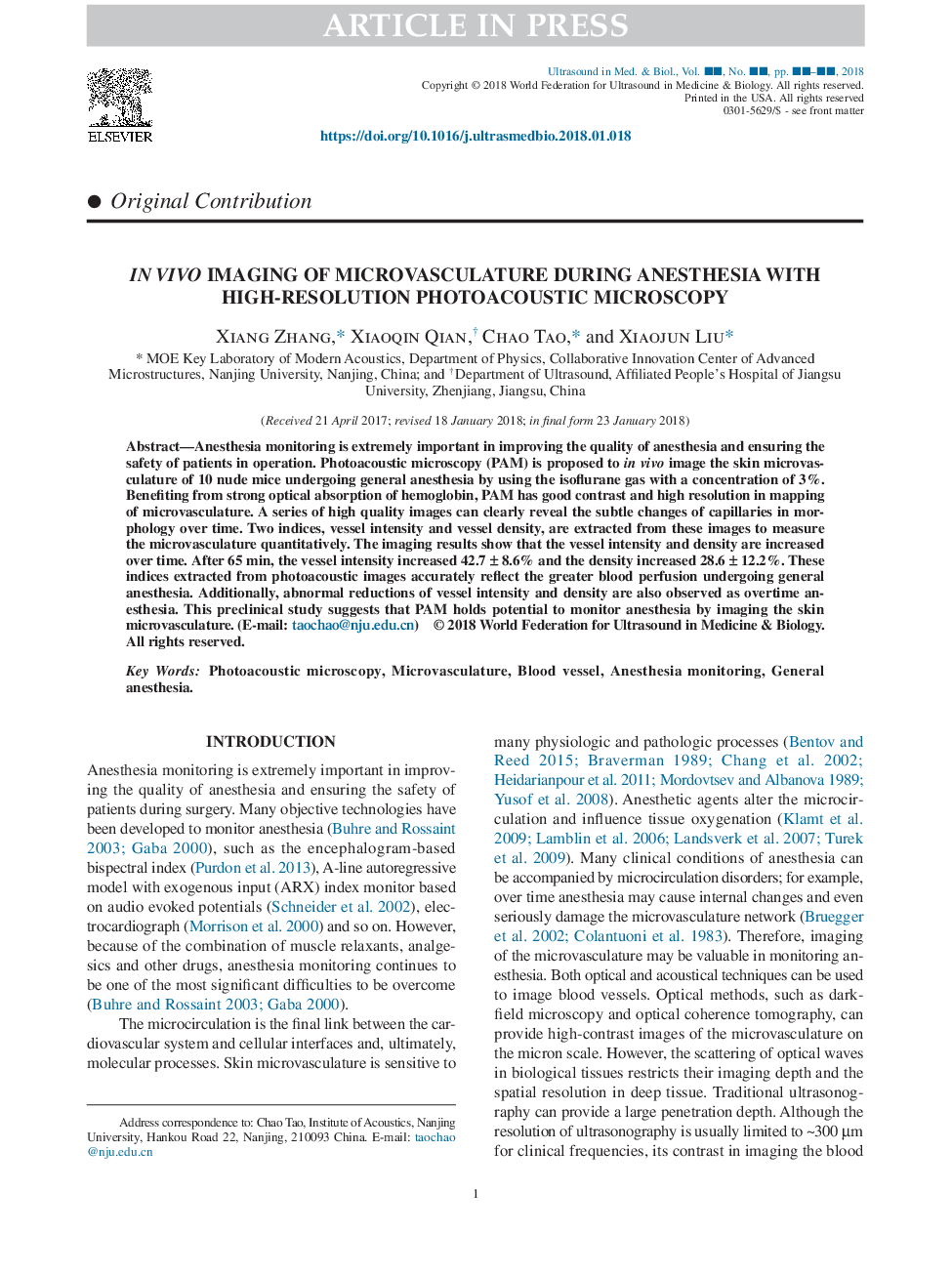| Article ID | Journal | Published Year | Pages | File Type |
|---|---|---|---|---|
| 8131216 | Ultrasound in Medicine & Biology | 2018 | 9 Pages |
Abstract
Anesthesia monitoring is extremely important in improving the quality of anesthesia and ensuring the safety of patients in operation. Photoacoustic microscopy (PAM) is proposed to in vivo image the skin microvasculature of 10 nude mice undergoing general anesthesia by using the isoflurane gas with a concentration of 3%. Benefiting from strong optical absorption of hemoglobin, PAM has good contrast and high resolution in mapping of microvasculature. A series of high quality images can clearly reveal the subtle changes of capillaries in morphology over time. Two indices, vessel intensity and vessel density, are extracted from these images to measure the microvasculature quantitatively. The imaging results show that the vessel intensity and density are increased over time. After 65âmin, the vessel intensity increased 42.7â±â8.6% and the density increased 28.6â±â12.2%. These indices extracted from photoacoustic images accurately reflect the greater blood perfusion undergoing general anesthesia. Additionally, abnormal reductions of vessel intensity and density are also observed as overtime anesthesia. This preclinical study suggests that PAM holds potential to monitor anesthesia by imaging the skin microvasculature.
Keywords
Related Topics
Physical Sciences and Engineering
Physics and Astronomy
Acoustics and Ultrasonics
Authors
Xiang Zhang, Xiaoqin Qian, Chao Tao, Xiaojun Liu,
